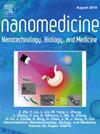Targeting the PI3K/Akt/mTOR pathway with nanotechnology: A novel therapeutic strategy for gastrointestinal cancers
IF 4.6
2区 医学
Q2 MEDICINE, RESEARCH & EXPERIMENTAL
Nanomedicine : nanotechnology, biology, and medicine
Pub Date : 2025-10-01
DOI:10.1016/j.nano.2025.102861
引用次数: 0
Abstract
Gastrointestinal cancers are among the most common and deadly malignancies, with millions of fatalities annually. The phosphoinositide 3-kinase (PI3K)/Akt/mammalian target of rapamycin (mTOR) signaling cascade is integral to the advancement, survival, and therapeutic resistance associated with gastrointestinal (GI) malignancies. Despite advancements in chemotherapy, challenges like drug resistance and side effects highlight the need for innovative treatments. Nanotechnology offers a promising solution by improving the precision and efficacy of therapies targeting this pathway while minimizing adverse effects. This review discusses the PI3K/Akt/mTOR pathway's role in gastrointestinal cancers and explores nanoparticle-based therapeutic approaches. Nanoparticles are classified into metal-based (e.g., selenium, gold, silver, iron oxide, and zinc oxide nanoparticles), lipid-based (e.g., liposomes, micelles, and solid lipid nanoparticles), and polymeric nanoparticles (e.g., dendrimers, nanospheres). Recent research on these approaches and ultra-small nanoparticles and superparticles is discussed along with their importance. This review also addresses the challenges, limitations, and prospects of the field.

纳米技术靶向PI3K/Akt/mTOR通路:一种新的胃肠道肿瘤治疗策略
胃肠道癌症是最常见和最致命的恶性肿瘤之一,每年有数百万人死亡。磷酸肌肽3-激酶(PI3K)/Akt/哺乳动物雷帕霉素靶点(mTOR)信号级联在胃肠道(GI)恶性肿瘤的进展、生存和治疗耐药中不可或缺。尽管化疗取得了进步,但耐药性和副作用等挑战凸显了对创新治疗方法的需求。纳米技术提供了一个很有前途的解决方案,它提高了靶向这一途径的治疗的准确性和有效性,同时最大限度地减少了副作用。本文讨论了PI3K/Akt/mTOR通路在胃肠道癌症中的作用,并探讨了基于纳米颗粒的治疗方法。纳米粒子分为金属纳米粒子(如硒、金、银、氧化铁和氧化锌纳米粒子)、脂质纳米粒子(如脂质体、胶束和固体脂质纳米粒子)和聚合物纳米粒子(如树状大分子、纳米球)。本文讨论了这些方法以及超小纳米粒子和超粒子的最新研究进展及其重要性。本文还讨论了该领域的挑战、局限性和前景。
本文章由计算机程序翻译,如有差异,请以英文原文为准。
求助全文
约1分钟内获得全文
求助全文
来源期刊
CiteScore
11.10
自引率
0.00%
发文量
133
审稿时长
42 days
期刊介绍:
The mission of Nanomedicine: Nanotechnology, Biology, and Medicine (Nanomedicine: NBM) is to promote the emerging interdisciplinary field of nanomedicine.
Nanomedicine: NBM is an international, peer-reviewed journal presenting novel, significant, and interdisciplinary theoretical and experimental results related to nanoscience and nanotechnology in the life and health sciences. Content includes basic, translational, and clinical research addressing diagnosis, treatment, monitoring, prediction, and prevention of diseases.

 求助内容:
求助内容: 应助结果提醒方式:
应助结果提醒方式:


